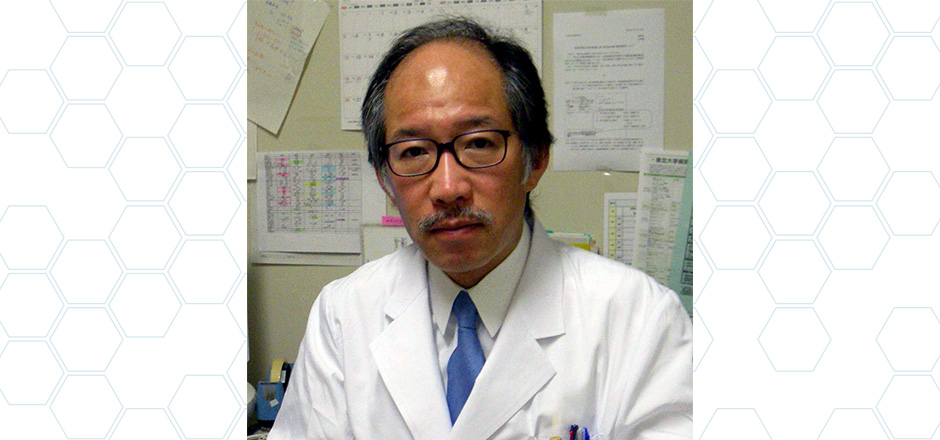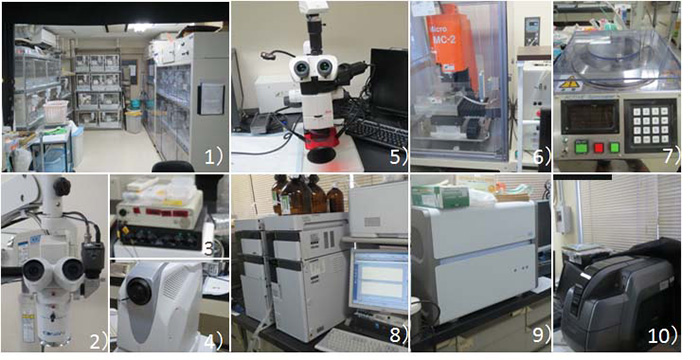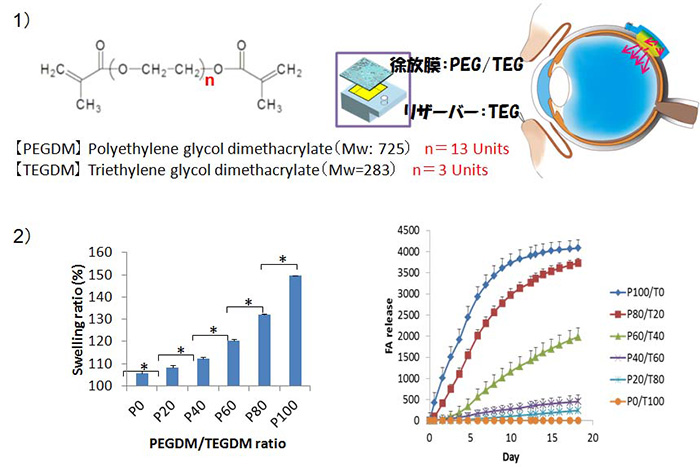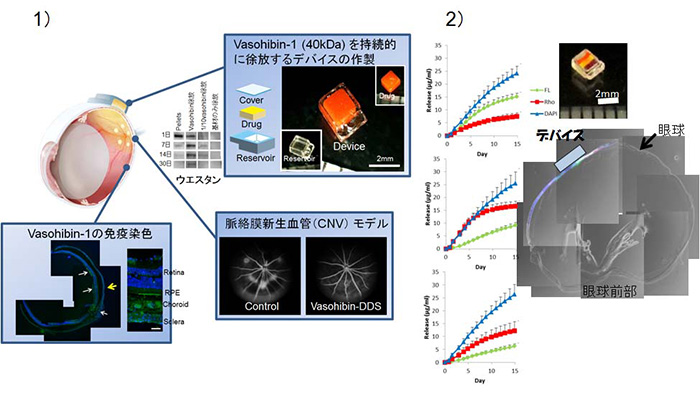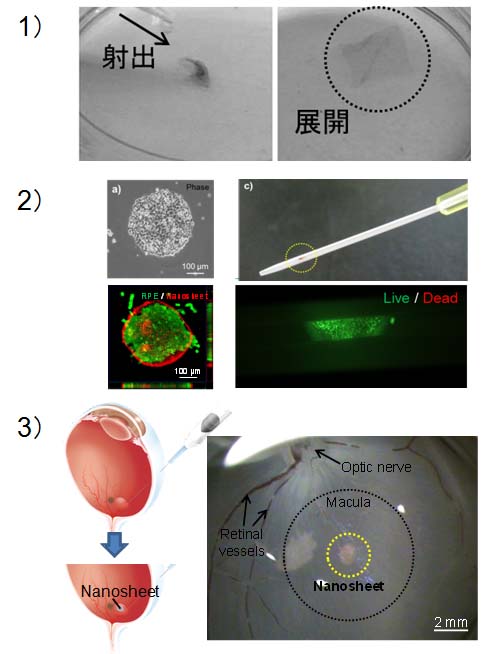Research and Development Projects Adopted in FY2014
Deployment type nanosheets creation technology development for biopharmaceutical local sustained release
Project Leader:Abe Toshiaki
Professor, Graduate School of Medicine, Tohoku University
We have been developing drug and/or cell delivery system. We performed these studies mainly for eye diseases at first. However, these techniques will be able to expand many other organs.
Because most of the blindness is attributed to retinal diseases, administration of some drugs to treat degenerating retina has been tried.
However, delivering drugs to the retina at the deepest part of the eye is not easy. Now recently the drug is administered directly by injection or intraocular implant in the eye,
there is a risk of side effects, such as infection. So we have developed a transscleral drug delivery system by using non-biodegradable device just put on sclera out of the eye.
We can be able to perform sustained long-term administration of drugs to the retina by our device. We performed our work in collaboration with Prof Nishizawa and Associate Prof.
Kaji (Department of Bioengineering and Robotics, Tohoku University) and Prof Nakazawa (Department of Ophthalmology, Tohoku University).
We are further aiming to establish the release of the biological drugs to some specific organs or lesions safely and easily.
For this, we are going to make a biodegradable and transplantable sheet that can culture the cells using microfabrication techniques.
We developed micropatterned nanosheets consisted of biodegradable poly (lactic- co -glycolic acid) (PLGA) so far. This sheet can be ejected from a syringe through the needle.
The final product was designed based on the tip obtained from aerospace structural engineering.
It can be expanded to conform to the local space according to the necessity although it is ejected through a narrow space like a needle.
Vitreous, subretinal space, choroid membrane, and subconjunctival space are representative narrow spaces but promising spaces for treatment of retinal disease.
Our microfabricated sheets can be transplanted to the target site in the eyes with an injection needle without suturing as that of vitreous surgery.
It was found that the sheet was not only applicable for cell culture but also gene- and drug-containable.
Then, it was considered that the sheet was easily attached to the target tissue to produce the status where target molecules and genes could be slowly released, because it had excellent flexibility and adhesiveness.
For clinical application, we hope the collaboration with companies and organizations.
<Figure1>Laboratory this and that
1) Animal breeding (rabbit breeding), 2) operation microscopes, 3) electroretinogram (ERG), 4) optical coherence tomography (OCT), are used for animal experiments and evaluation.
5) Fluorescence microscopy, 6) minute processing machine, 7) spincoating machine, 8) high performance liquid chromatography, 9) real-time PCR, 10) fluorescent microscope, are used for the evaluation and the inspection of controlled released drug from nano-sheet before and after the animal experiments.
<Figure2>Sustained drug delivery system (PCT/JP2010/63793)
Our device shows sustained controlled release from a sclera without disturbing intra-retinal tissues.
1) The sustained controlled drug release was achieved by the combination of PEGDM and TEGDM, the polymers different in only molecular weight, and it results to be possible for one way drug release by using non-trans permeable TEGDM for reservoir.
2) One of the features of this device includes that it can control controlled release by the combination of the polymers that are different in the coefficient of expansion. (Biomaterials 32, 1950 10 (2011), Acta Biomaterialia 680(2014))
<Figure3>Controlled release examination of the high molecular weight (antibodies)
1) The controlled release of higher molecules have also achieved by the different combination of the TEGDM/PEGDM ration (PLoS ONE 8, e58580 (2013)).
2) We can also release multi-drugs from the device. This is because our device is reservoir type and we can pelletizes each drug by different combination of PEGDM/TEGDM ratio in the reservoir.
We will challenge the similar possibility using nano-sheets for even biomedicine.
<Figure4>Nanocarpet local site development and cell delivery (PCT/JP2014/67852)
We previously reported a clinical study result of the cell transplantation in patients with AMD, and have examined the alternative methods to deliver the safe and sure methods for cell transplantation, such as cell sheet transplantation.
1) We developed micropatterned nanosheets (nano-carpets) which can be ejected from a syringe through the needle, designed based on the tip obtained from aerospace structural engineering.
2) Cell cultures are possible, and 3) ejected and expanded to conform to the local space, such as subretinal space. (Adv Mater 26, 1699(2014))
